How To Use Google Keyword Planner Tool 2020: Tips, Hacks And Strategies For SEO.
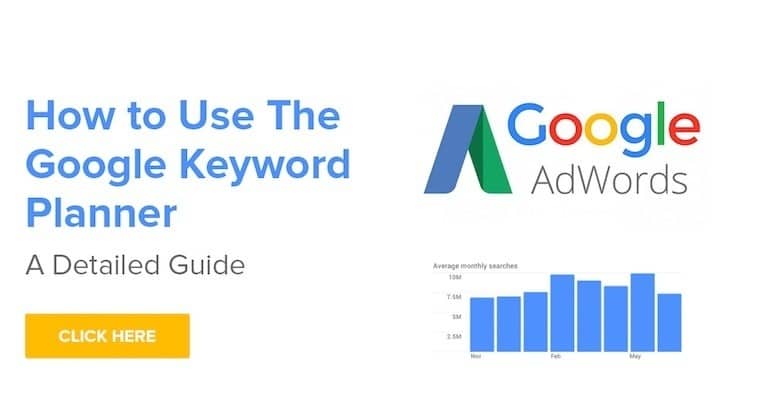
Would you like more Google traffic? To understand what people are actually looking for, you first need to do keyword research.
Fortunately, Google has a free keyword research tool to enable you to do just that: Google Keyword Planner (formerly Google Keyword Tool).
Google Keyword Planner gets a bad rap, especially as Google removed the ability to see accurate volumes of monthly searches. They’re showing an unclear range now.

You can get these back, but you must run a campaign for AdWords. It’s costing cash.
But don’t let you put off this. Google Keyword Planner is a strong INSANELY instrument with clear advantages. Not least, the fact that it suggests ideas for keywords that you can’t find elsewhere. I verified, trust me.
The issue? Most SEO don’t know how to get the most out of this Tool.
In this article, I’ll demonstrate to you how Google Keyword Planner can get some severe SEO importance. Who understands that? There may even be a few hacks to revive the precise quantities of search … free of charge. Let’s begin with the basics.
How to Access Google Keyword Planner (Free)
Google Keyword Planner is free to use at 100 percent. To gain access, you don’t need to spend a cent on AdWords advertisements. You just need an account from Google.
But this is what happens sometimes when you attempt to access the tool:
You are asked to set up a campaign for AdWords.
In reality, with this, Google is so aggressive that it may look like there is no way to access the tool without first handing over some money. Well, I’ve got excellent news: You can access the AdWords ad WITHOUT instrument. All you need to do is jump through a few hoops.
To begin with, go here. Click “Go to Keyword Planner.“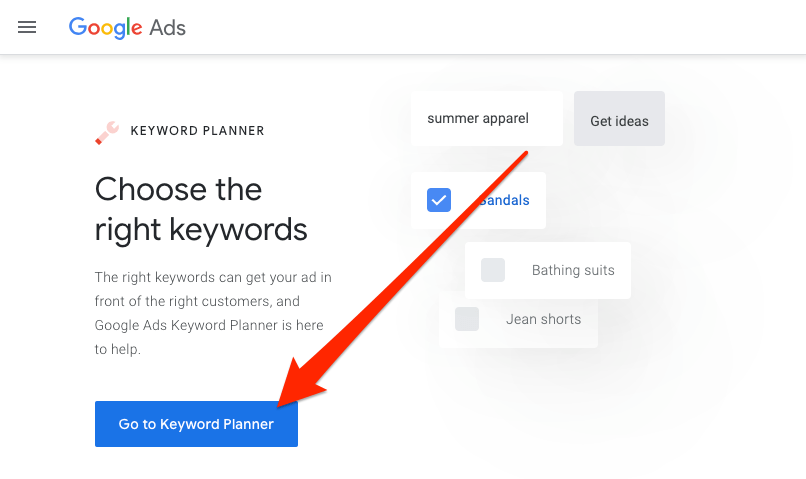 You may then be requested to re-enter for checking your password.
You may then be requested to re-enter for checking your password.
Now here’s the important part:
Don’t choose any of the three choices when you see the “What’s your primary marketing objective” screen. Hit the little “Google Ads Experienced?” Instead of the link below.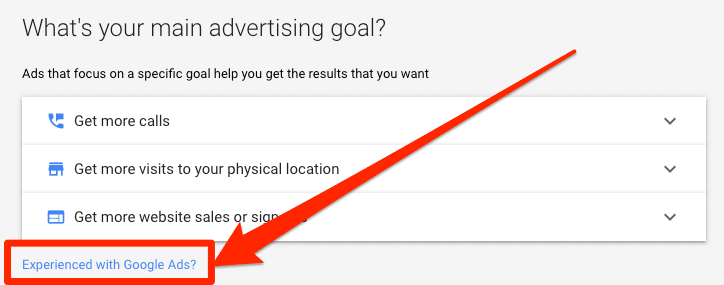
DO NOT see the LINK?
Google Keyword Planner has another quirk here: Google only shows this link in a certain width browser windows. 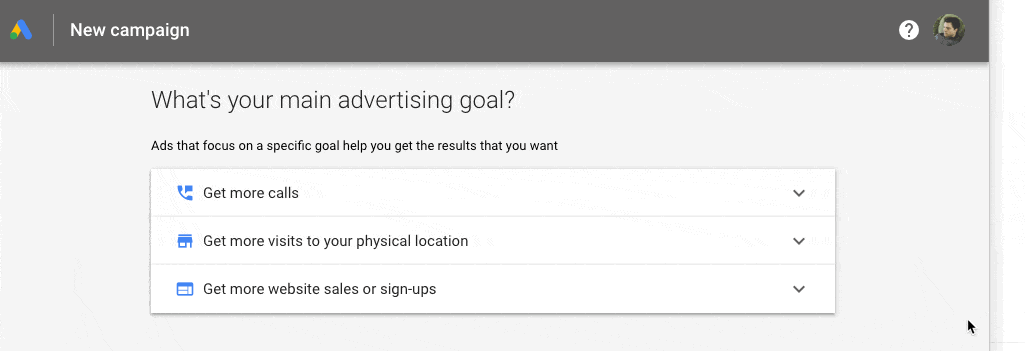 Try to resize your browser window to make it wider if you don’t see the link. It should then appear as absurd as it is.
Try to resize your browser window to make it wider if you don’t see the link. It should then appear as absurd as it is.
Hit the link “Create an account without a campaign” on the next screen. (This is a smaller one.)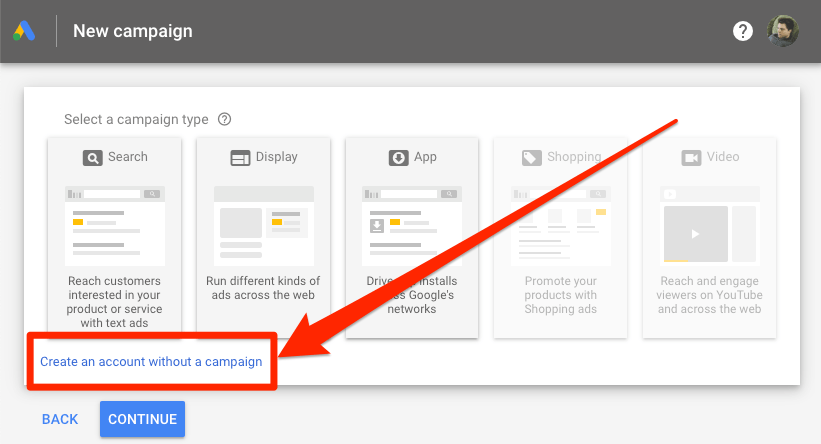
On the next page, hit the “Submit” button. (Do not worry, Google will not ask for information about your credit card.). if google will ask for credit card information then click on “Google Ads” Logo.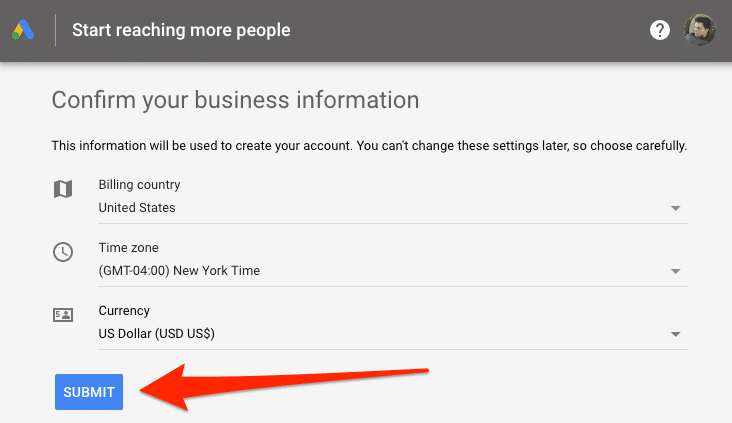
Then you should see the Screen: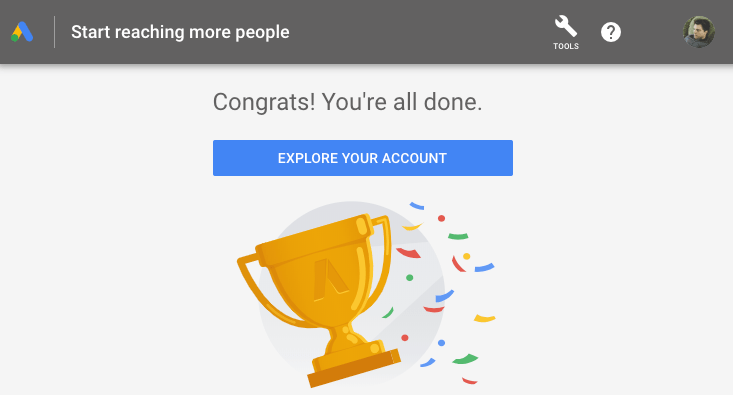
Please click the connection “Explore your account.” Then press on the menu bar on the “Tools” link and hit “Switch to Expert Mode or directly click on “Keyword Planner ” link.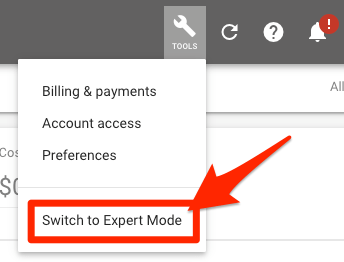
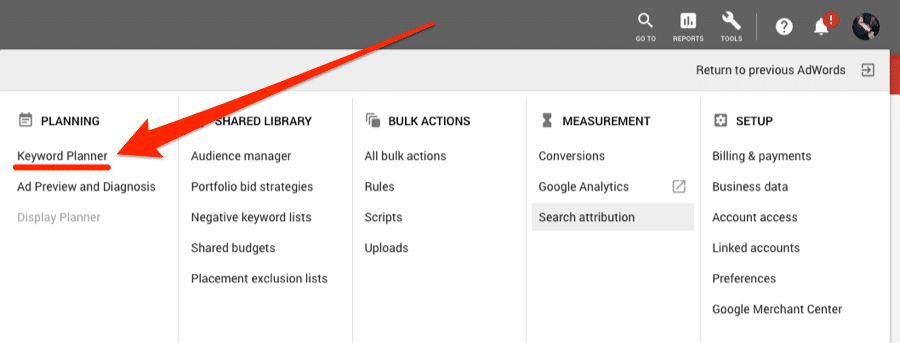
You’ve got access now! No need to enter details about billing or run an ad for AdWords.
Let’s now learn how to use it.
How to use Keyword Planner from Google
Google Keyword Planner provides you two start-up alternatives:
- Find keywords: get ideas for keywords to assist you to reach individuals interested in your product or service ;
- Get search volume and forecasts: see your keywords for query volume and other historical metrics, as well as forecasts of how they might be performing in the future.
Both alternatives bring you to the Keyword Plan, but depending on your decision, what you see will differ slightly. These are not two stand-alone distinct tools.
Let’s study in more detail for a starting point.
“Find keywords”
Would you like to find fresh thoughts for keywords? Begin here.
According to the guidelines from Google, simply “Enter words, sentences, or a business-related URL.” Google will then kick back some suggestions for keywords.
Here are the “SEO” recommendations: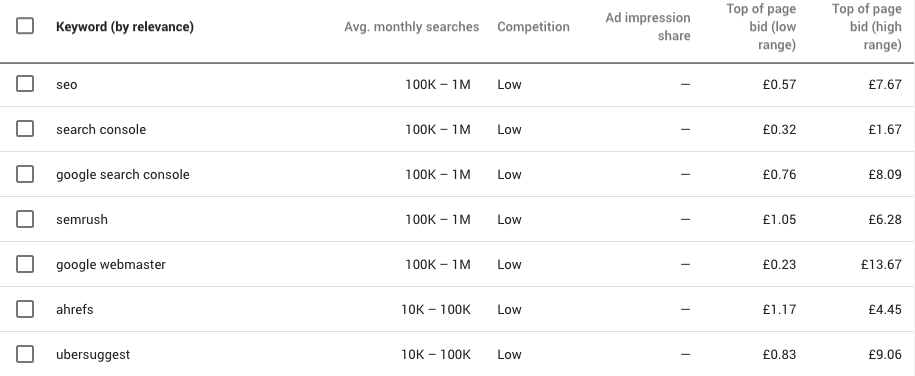
There’s a total of 1,106 keyword concepts.
You’ll see for every proposal:
- Avg. monthly searches;
- Competition;
- Top of page bid (low range);
- Top of page bid (high range)
But you’re not just one word, sentences operate as well. And up to 10 seed keywords/phrases can be entered at a moment.
The option to use a URL or website as the seed is also available.
Here’s another trick: you can simultaneously enter up to 10 seed keywords and a URL.
But whatever you do, a few thousand keyword suggestions will never be shown by Google.
I still only received 4,715 suggestions even when I entered a maximum of ten seed keywords and a URL.
“Get search volume and forecasts”
Do you have a list of keywords for which you would like to see metrics? Begin here.
Just paste them in, press “Get started” and it will bring you to the section on Forecasts.
There are no proposals for keywords here. It demonstrates how many clicks and impressions you can expect in Google AdWords over the next 30 days if you decide to run advertisements for your selected keywords. Estimated expenses, CTR, and CPC will also be seen.
Most of this information is obviously intended for advertisers from AdWords. But here’s a fast trick: go to the “Historical Metrics” tab and for your keywords, you’ll see an average 12-month search volume. These are the same ranges as the “Find New Keywords” option when you start.
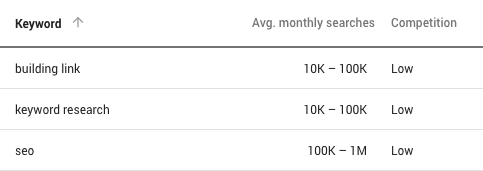
Don’t see the value in those ranges?
Continue to read. I may have a trick up my sleeve to unlock precise search volumes, you never understand.
7 Hacks (that most SEOs don’t know) Google Keyword Planner
Here’s what occurred when I asked for their top Google Keyword Planner hacks/tips from my Facebook buddies: 

Fair point. But there’s a lot more to Google Keyword Planner than search volumes.
Here are 7 hacks to assist you to make the most of it, beginning with the one you’ve all been waiting for …
1. Unlock EXACT search volumes
One of the most frustrating things about Keyword Planner is Google’s reluctance to display accurate search quantities. This is why the tool is no longer used by many SEOs.
Look at these two keywords, for example — both have a 10K-100 K search volume variety:
There are two methods to get accurate figures … free of cost.
Method # 1: Consider the estimated impressions for maximum CPC
Start by adding to your plan some keywords. You can do this by entering the “Get search quantities and metrics” tool manually in a list of keywords.
Alternatively, inspect some keywords and add them to your plan like this in the Keyword Ideas perspective. Just make sure when prompted to pick the “precise match” option.
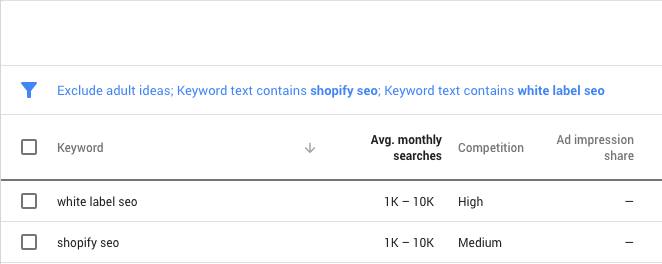
Go to the viewpoint of the keywords. At the top you should see a box that looks like this:

Hit the drop-down and make sure you have the maximum. The CPC is set to maximum height. You can do this by clicking on the graph’s right side, like this:
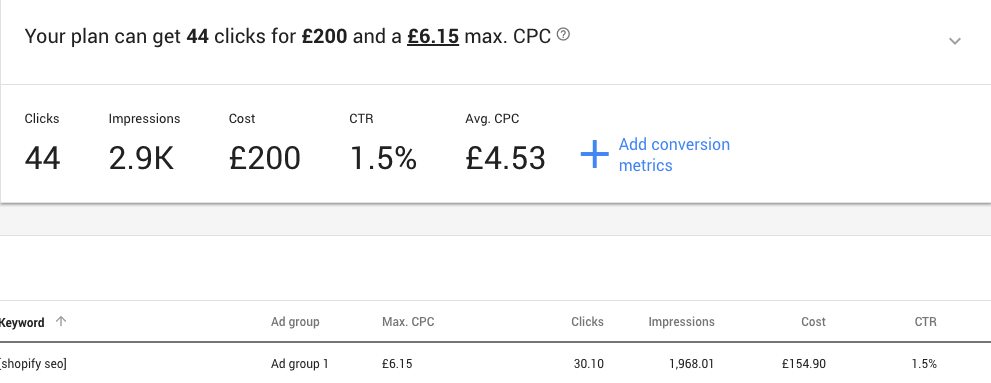
Pay attention now to the column “Impressions.” This informs you the estimated amount of impressions your ad would get if you were to run it for those particular keywords over the course of the next month.

Since you set the max CPC so high, these impressions should be quite near to that keyword’s real monthly search volume.
IMPORTANT: This is a very rough way to gauge quantities of search. It’s not definitive at all.
Method #2. Install Keywords Everywhere
Keywords Everywhere is a free Chrome extension that adds to the websites you already use search volume and CPC: Google, YouTube, Amazon, etc.
Here it is in action:

But a lot of people don’t understand something here: it carries search volumes to Google Keyword Planner as well.
Don’t trust me? Take a read:
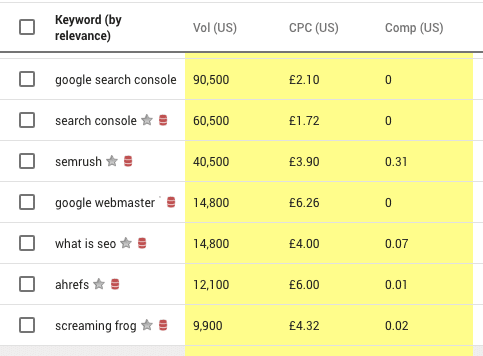
Cool, right? The problem is there is no easy way to export this information.
But it’s possible with some XPath software and the Scraper Chrome extension.
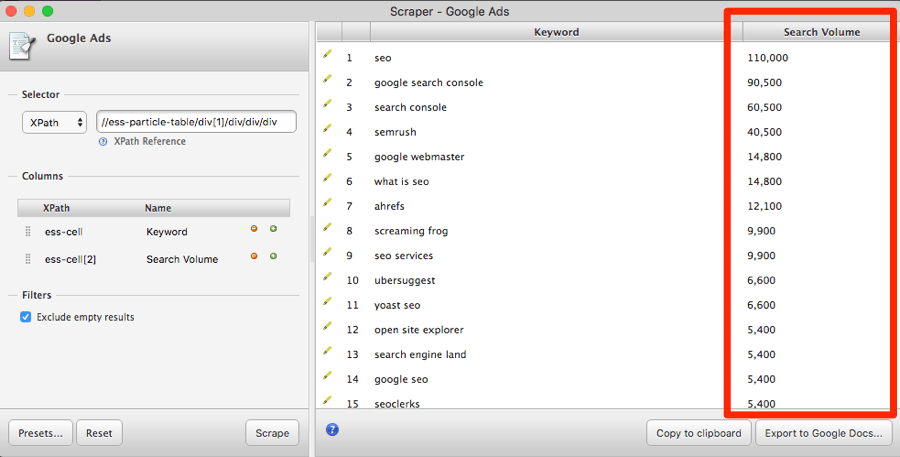
Whatever “hack” you use, I suggest using a pinch of salt to take the figures.
2. See keyword ideas for more than ten terms at ONCE
Here’s what occurs if in Google Keyword Planner you attempt to add more than 10 seed keywords:

“No stairway denied.” video

But there’s a way to get this round. Just do one at a time for them. Then add them to your plan by pressing the checkbox at the top of the list, selecting the “select all XXX” option and clicking “add to the schedule.”
Let’s do that for the “SEO” keyword-based 743 recommendations.

And then repeat for suggestions based on 10 other keywords (thus a total of 11 seed keywords).
Now, if we go under Keywords to the Historical Metrics tab, we see all the keywords we’ve just added. And best keyword all, the list was automatically de-duplicated, so there are no repeated keywords.
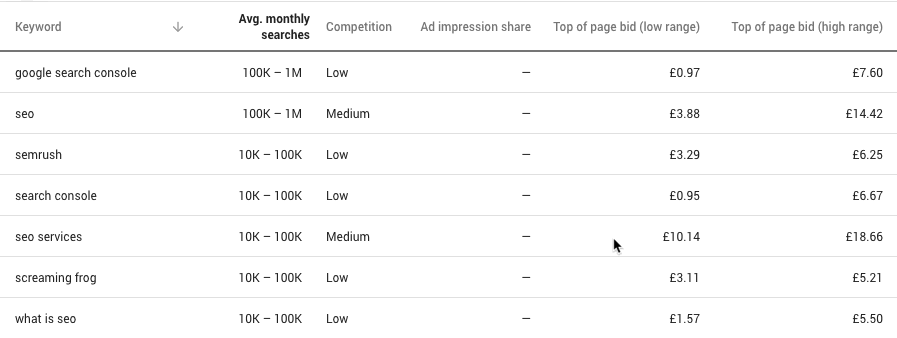
They are displayed in alphabetical order by default. But you can order whatever you like by search quantity, competition.
3. Steal keyword ideas from your competitors
Google Keyword Planner can produce recommendations for keywords from a URL.
See where I am going with this? You can spy and steal your keywords on your rivals. Just grab one of your URLs, paste it in, and from the drop-down, select “Entire page.”
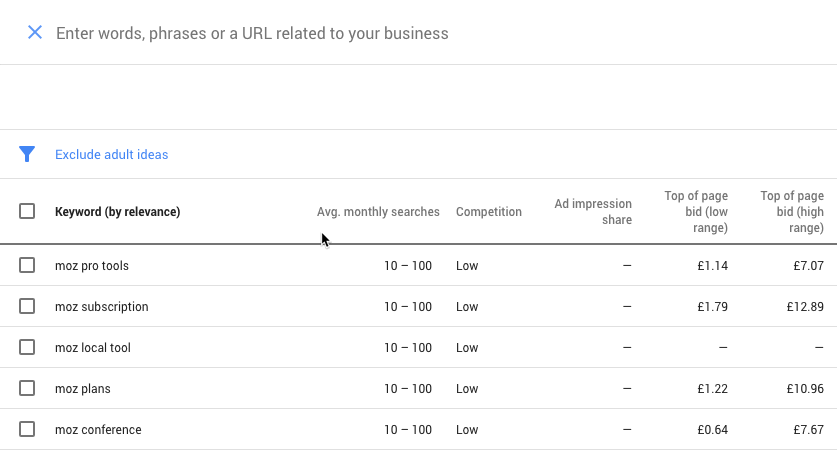
2,274 keyword suggestions. If, as we do here, you see many keywords linked to the competing brand, use the filter to exclude them. Filter > keyword text > brand name
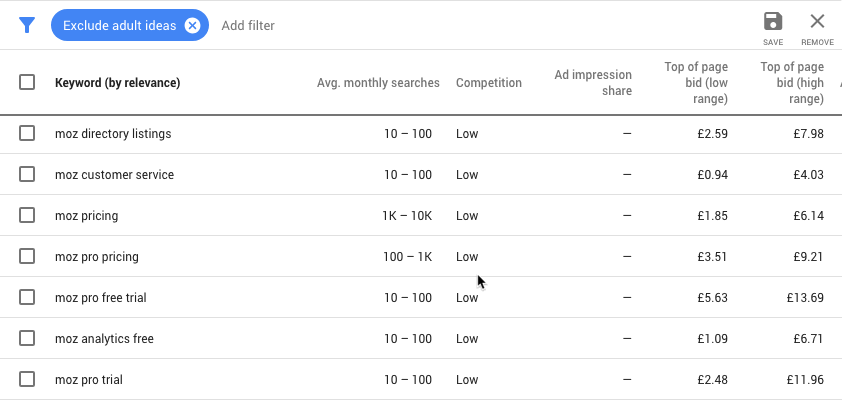
Rinse and repeat a never-ending stream of new keyword ideas for various rivals.
PRO TIP
Looking for a specific page or blog post to discover keyword thoughts? Choose “only this page” instead.
Let’s do that for Google Keyword Planner’s competing guide. (What a meta I understand! 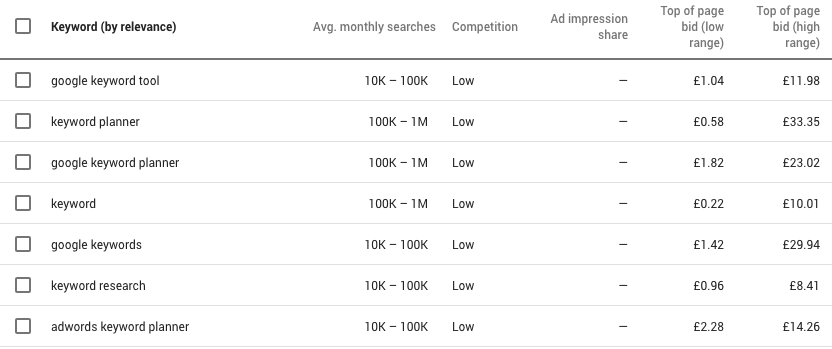 652 results. There are also some good ideas. I believe I’m going to sprinkle some of those throughout this guide — see if you can see them. ?
652 results. There are also some good ideas. I believe I’m going to sprinkle some of those throughout this guide — see if you can see them. ?
4. Find the questions people are asking
Knowing what questions your audience asks may be super-useful to come up with ideas about content. This is likely why instruments like Answer The Public are so popular with free keyword research. But for this, you don’t have to use a distinct tool. You can do this in Keyword Planner with a little hacking.
Filter > Keyword text > contains > enter one of the following: what,when,who,why,how,where.
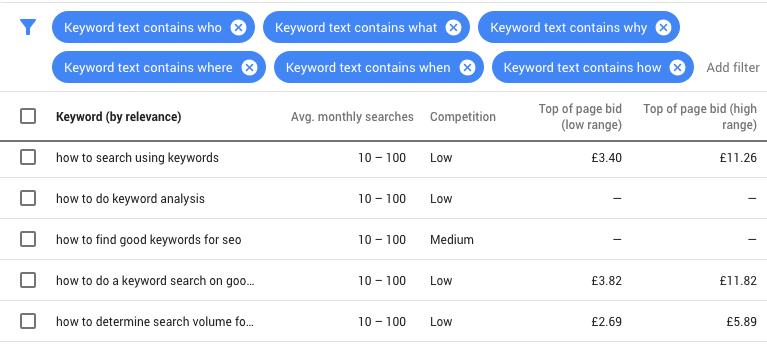
For the other five assumptions, repeat the process. When you’re finished, it should look like this:
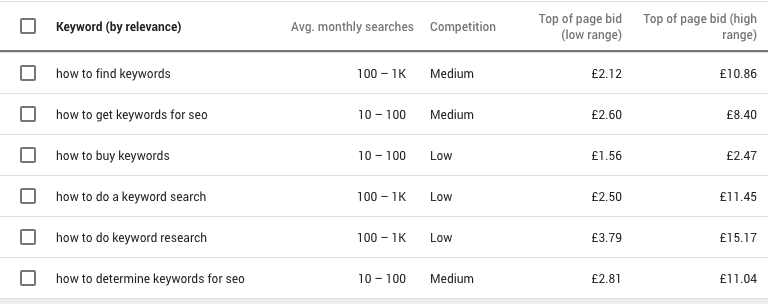
Result: 211 questions‐type suggestions
There are some great ideas about content here, such as:
- What is building links?
- How to optimizing search engines?
- what is the best SEO instrument?
Rinse and repeat this method to create a BIG list of question-based queries with distinct seed keywords.
Every time you add the outcomes filtered to your scheme. You can even generate an ad group for these terms specifically.
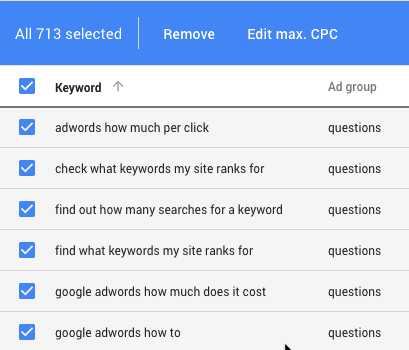
This makes filtering in Excel / Google Sheets for these terms simpler if you are exporting your plan.
5. Find lucrative keywords by looking at suggested bid
Suggestions for keywords are all nice and good, but how do you understand the value of your company?
You could manually sift through them all, but it’s no fun, particularly if you’ve got hundreds or thousands of keyword ideas. My suggestion? Use the column “High-range page bid top.”
Here is the definition of what this is by Google:
“Top of page bid (high range)” shows the higher range of what advertisers have historically paid for a keyword’s top of page bid, based on your location and Search Network settings. The average CPC of your keywords may vary.
I understand what you think:
Josh, it sounds like AdWords … how helpful is it to SEO?
Simple. If you are prepared to bid a lot for this keyword, you need to convert it to sales. And if it’s selling or leading cold Google traffic, it’s likely worth pursuing and attempting to rank for.
Click the header of the column to sort by this column. Make sure it’s sorted high to low as that manner will bring the most profitable keywords to the top.
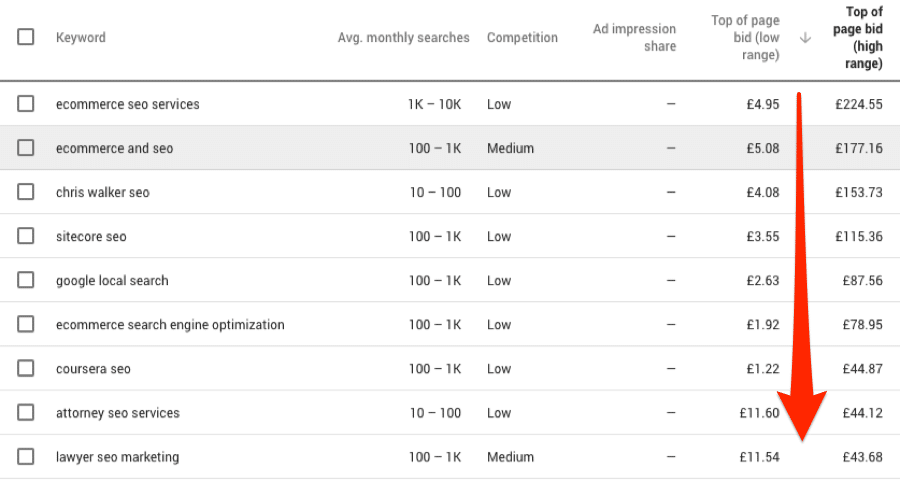 Nine times out of 10, with business intent, this will immediately unveil the keywords.
Nine times out of 10, with business intent, this will immediately unveil the keywords.
PRO TIP
Do you think you want to target one of these keywords? Before doing so, always remember to verify what publicity companies are here. Googling the word and looking at the ads can do this.
Do they sell the same goods or services that you sell? Then, targeting is likely a useful keyword.
Oh, and here’s a bonus tip: Sort this column to locate information search terms in ascending order. These are often excellent blog posts subjects.
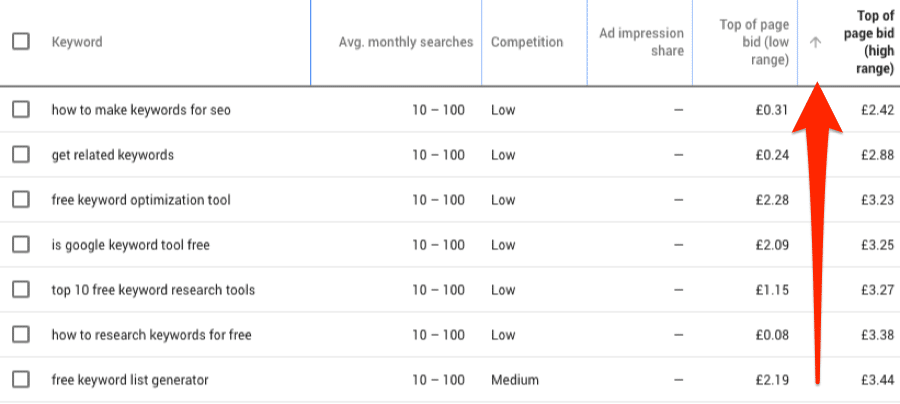
6. See keyword volumes for local areas… right down to the CITY level
Most keyword study instruments are unable to tell you how many individuals in particular countries, towns and other localized regions are searching for a word. They only indicate the nation as a whole search volume.
When it comes to local SEO, such volumes are somewhat pointless.
You’re a plumber, let’s say. Using the search volumes hack (# 1) impressions, we can see that the word “plumber” will receive an impression of an estimated ~286 K over the next 30 days.

But plumbers are not serving the nation as a whole. That would not be possible.
The cool thing about Google Keyword Planner is that for much more localized fields you can actually see the estimated impressions. Even for certain towns.
Simply begin typing a place in the top location filter. For Los Angeles (town), let’s try it.
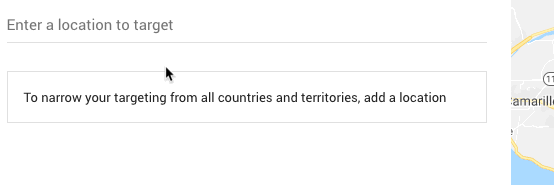
Now we see that “plumber” only has monthly impressions of approximately 12K. Okay, nice, right?

However, this is not only helpful for local companies. You can also use it to comprehend where a word is searched for the most famous places.
Just add a keyword (or many) to your plan — I’m going to go for “hendersons appreciate it.”
Now go to the overview of the plan, select “All places” in the filter places, and scroll down to the locations box. You will see a list of the top nations searching for the keyword.

You can see that 94.5 percent of all impressions come from the United Kingdom from ” hendersons relish .” Because it’s a British condiment, hardly surprising.
But you can go deeper than that. Knowing that most searches come from the UK, we can put the UK in the location filter as the place. The Locations box will now display more located regions.

93.1% In England, all searches are conducted. Use the drop-down and further narrow it down to counties.

17.1 percent in South Yorkshire, but 8.7 percent in London as well — it seems (for some reason) popular among Londoners as well. Now let’s look at cities.

In Sheffield, 8%. It’s hardly surprising again — that’s where it’s created.
PRO TIP You can also use this function to assist you to determine for which content you should generate. For instance, 3.9 percent of all “luxury car rental” searches come from Los Angeles City.  If you run a luxury vehicle hire business, it could pay to generate content that would appeal to Los Angeles people … even if it was not entirely related to cars. This would be an excellent way for prospective clients to get on the radar.
If you run a luxury vehicle hire business, it could pay to generate content that would appeal to Los Angeles people … even if it was not entirely related to cars. This would be an excellent way for prospective clients to get on the radar.
7. See which devices people are using (and which you should be optimizing for)
These days, people are using many device kinds to browse the internet, namely smartphones, laptops, and tablets. Each has very distinct screen sizes, meaning it’s hard to optimize your site completely for all of them.
To demonstrate, this is how a portion of the free keyword research instruments posted on the desktop looks like …
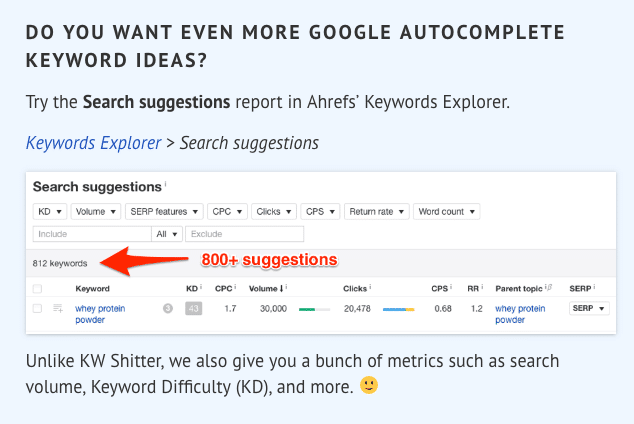
…and on mobile:
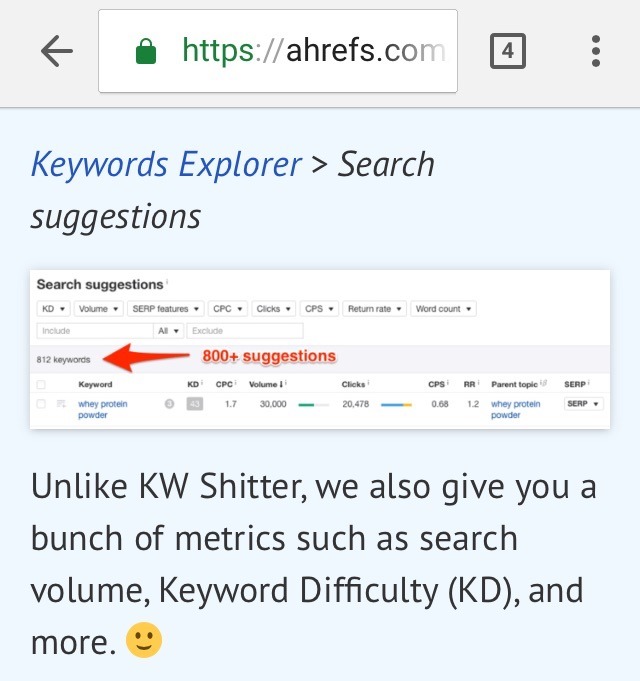
While the text is fully readable, on a tiny screen size some of the numbers on the screenshot are fairly hard to read. This does not create the greatest user experience possible.
But here’s the thing: I understand most of the individuals reading this manual are doing it on the desktop.
How? I checked in Google Keyword Planner.
Add a keyword to your plan to do this and go to the overview of the plan. Look at the chapter on devices, namely the bar on impressions. Rollover this and it will tell you the proportion of impressions from each category of devices
.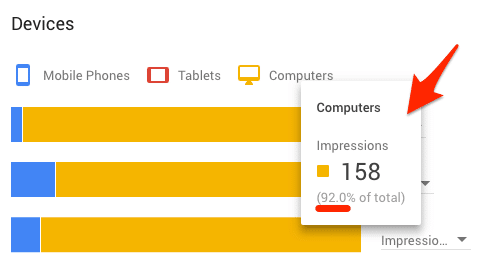
You can see that 92 percent of impressions come from computers — devices with big screens — for the keyword “free keyword study instruments.”
Therefore, prioritizing the desktop user experience above all else makes complete sense.
It’s going to be the other way round for some keywords. Take, for instance, “best restaurants near me.”

91.4 percent of all mobile device impressions.
That’s meaningful. Googling this is most probably just looking for a nice lunch/dinner restaurant while out and around.
Final Thoughts
Clearly, Google Keyword Planner is a strong instrument. I suggest that you include it in your study workflow for keywords. It’s packed with valuable insights you can’t get from any other study instruments for keywords.
But it has its constraints, a BIG one being lacking precise search quantities.
Fortunately, other keyword research instruments can solve this. These instruments combine Google Keyword Planner information with clickstream data to produce precise estimates of the search quantity, and more.

READ ALSO:
- How To Delete and Temporarily Deactivate Your Kik Account
- Asus Zenfone 6 2020 (Zenfone 6z) Price in India June 2020, Specifications, Release Date
- Samsung Galaxy Note10 Pro Specification
- HR E-Mail Id’s
- Free WordPress Plugins 2020 for Professional WordPress Websites
- How to Stop Apple, Amazon, and Google from listening to your Siri, Alexa, and Assistant recordings
- How To Set Up Google Home Mini Step By Step






![How to Hack Facebook, Twitter, Gmail Using KeyLogger [Kali Linux – BeeLogger]](http://www.mrevery.com/wp-content/uploads/2020/06/How-to-Hack-Facebook-Twitter-Gmail-Using-KeyLogger-Kali-Linux-BeeLogger-800x450.jpg)
Hi there I am so happy I found your web site, I really found you by error, while I was browsing on Google for something else, Nonetheless I am here now and would just like to say thank you for a remarkable post and a all round enjoyable blog (I also love the theme/design), I donít have time to look over it all at the minute but I have book-marked it and also added your RSS feeds, so when I have time I will be back to read more, Please do keep up the excellent job.